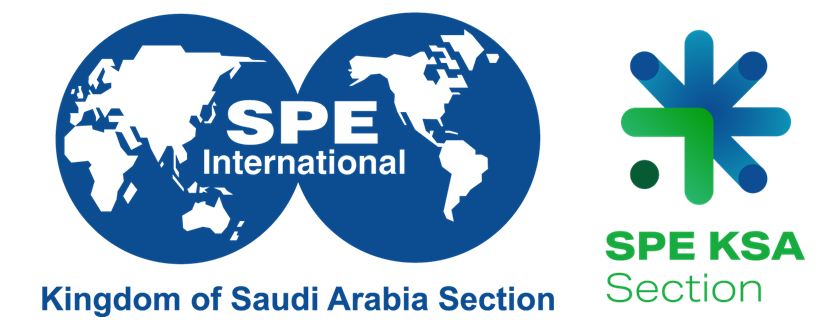By Yara Alsinan
Saudi Aramco, Petroleum Engineer

To the unfamiliar ear, Arabic may seem like just a language, characterized by its distinctive sounds and complex script. Beneath the surface, however, lie treasures of profound depth and rich heritage. The Arabic Language surpasses mere communication. With roots delving deep into history, it is a beautiful ode to centuries of resilience and creativity, a vessel of generational knowledge, a bearer of stories and a carrier of cultural heritage. Holding within its letters the essence of grace and intellect, Arabic is the delicate yet powerful poetry, the vibrant and elegant prose, the countless narratives and discoveries transcending eras and boundaries. In the dynamic realm of human communication, where languages transform and fade with the ever-changing needs of society, the Arabic language stands as a symbol of resilience and continuity, evolving through time while maintaining its distinct identity. As we navigate through the intricate beauty and eloquent history of the Language, we will unravel its exemplary influence and resilience as a thread connecting the past, present and future.
At the heart of Arabic identity lies its linguistic legacy – a legacy shaped by centuries of cultural interchange and potent art. Since its earliest indications in the 8th century BCE in the Arabian Peninsula, Arabic has served as a bridge between innumerable generations over history. In its nature, Arabic is a language so deep that it unravels emotions skillfully, a musical pattern so articulate with meaning. Such depth has allowed the language to evolve to a means that honors eloquence, as Arabs engaged in competitions of poetry, language aesthetics and expression. With those competitions, the nomadic lifestyle of the region’s inhabitants, and most importantly, subsequent Muslim conquests, Arabic has propagated and evolved over time.
With that reach, the Arabic Language flourished on multiple fronts, forming a bonding link between scholars, traders, and scientists from different backgrounds. During the Islamic Golden Age, the breakthroughs of Arab scientists like Ibn Sina, Al Khawarizmi, and Al Kindi solidified Arabic’s position as a leading language of intellect. With time, Arabic has developed, adapted and influenced numerous languages worldwide, including Spanish, Persian, and Turkish. Additionally, the West has adopted numerous concepts and words from Arab culture and language, including algebra, guitar, carat, and many others, underscoring the language’s far-reaching influence.
Most notably, the Arabic Language is renowned for its illustrious literature, specifically its indelible mark on poetry. A multifaceted tradition spanning various time periods, Arabic poetry is defined by its linguistic beauty and intelligent rhymes. Its sophisticated metaphors skillfully weave colorful scenes and convey emotions, captivating readers globally. Classical Arabic poetry flourished in the pre-Islamic era, where poems’ tone and vernacular would imitate the difficult living conditions, reflect the harsh desert environment, and delve into themes of romance, praise, elegy and countless more. Aside from its aesthetic significance, pre-Islamic poetry serves as a crucial source in terms of language in grammar and vocabulary, while also providing a historical record of politics and culture. Other ages like The Abbasid Caliphate witnessed the blossoming of poetic expression, reflecting themes of the era’s customs and social state. From the legendary Mu’allaqat of Antarah Ibn Shaddad to the timeless verses of Almutanabbi, the profound depth of Arabic poetry coupled with its lyrical genius makes it truly unparalleled in vividly capturing human emotions and experiences. Despite the diverse styles, Arabic poetry continues to address contemporary issues while exemplifying the power of language and the beauty of expression. Its influence extends beyond linguistic and cultural boundaries, highlighting its universal appeal.
Likewise, since its foundation as an ancient art and until today, Arabic calligraphy has always distinguished itself for both its cultural significance and exquisite beauty. Evolving from simple script to an intricate artform, it made its way out of books and into diverse surfaces like ceramics, textiles, and most importantly architecture, decorating buildings and adorning mosques. Its influence travels beyond the Arab world, shaping art styles and cultures across regions like Anadulsia in Spain and inspiring art styles like the Baroque and Rococo in Europe. Being celebrated in iconic historical landmarks like Alhambra and in world-renowned museums like the Louvre is a testament to its enduring legacy. In varying languages and regions around the world, the practice and significance of calligraphy has faltered over the years, however, the magnificent artform of Arabic calligraphy remains as vibrant as ever. In an age of modern culture where words seem to lose their impact, Arabic calligraphy elevates writing to a sacred and captivating art, celebrating the language’s written form.
Given its rich history and influence, it’s important to recognize that the Arabic language is not monolithic. On the contrary, alongside the official Modern Standard Arabic (MSA), or Al Fus’ha, Arabic encompasses numerous colloquial dialects. These 30+ dialects vary considerably in vocabulary, pronunciation, and syntax not only between countries, but even within neighboring regions and cities. Each dialect is a reflection of its speakers, representing connections to their origins, history, geography and cultural experiences. Despite these differences, Arabic remains a powerful, enduring force unifying Arabs worldwide and creating an undeniable connection among them, painting a vivid portrait of diversity within unity.
And yet, in recent years, the rapid pace of globalization has posed a challenge to the preservation of Arabic and safeguarding its position in all the fronts at which it once led. This phenomenon is exacerbated by the ascendance of English as a globally dominant language, inciting a palpable inclination among the younger generation to prioritize proficiency in this lingua franca. This shift is not indicative of Arabic’s demise; but the allure of the Western world, coupled with the pragmatic state of the global job market is slowly causing a drift away from Arabic. Many young Arab parents inadvertently contribute to this trend by placing greater emphasis on English in their children’s upbringing, taking their native tongue for granted. Although cultivating bilingualism is practically essential nowadays and undeniably offers countless advantages, including exposure to diverse cultures and heightened cognitive skills, maintaining a sensible balance is crucial. While millions adeptly navigate bilingualism and maintain competence in both languages, a disconcerting number find themselves gradually relinquishing their grasp on Arabic, imperiling their connection to its culture and linguistic intricacies.
Despite these growing trials, the Arabic language remains secure in its status as an eternal and enduring force, far from the precipice of peril. Throughout history, Arabic has survived formidable threats, notably enduring colonization across numerous Arab nations. Today, it remains steadfast in the face of change and globalization. A cornerstone to its perseverance is its pivotal role as the official, unifying language of Islam, revered and understood by millions as the foundation of their faith. With 456 million native speakers and serving as the liturgical language for 1.9 billion Muslims globally, Arabic commands a profound influence on both secular and spiritual fronts. Recognized as one of the official languages of the United Nations, Arabic ranks sixth among most spoken languages worldwide. Its presence in official documents, media, and everyday life underscores its unyielding significance. Indeed, Arabic remains a language of incomparable richness, however, its brilliance and versatility are vastly underutilized and underappreciated today, emphasizing the necessity to maintain it.
Arabic transcends the mundane confines of language. Rather, it is the profound embodiment of Arab identity – a culmination of centuries of cultural heritage that go beyond the boundaries of time. And here lies the imperative to preserve the Arabic tongue, to recognize its boundless influence, to ensure the upcoming generations not only uphold, but comprehend and appreciate the ethereal beauty of their language, and eventually their culture and identity. To realize that, despite the rise of global tongues, Arabic stands as an irreplaceable melody of history. To embrace Arabic and fathom a fraction of its brilliance is to embrace the very essence of Arabhood and have roots woven in rich culture and heritage. Arabic is not just a language. Through history’s highs and lows, from its golden ages to facing adversity, it has prevailed as a strong, unwavering, yet adaptable force. It is a timeless symphony of resilience, a testament to our shared identity – and if we lose that, what would we have?

